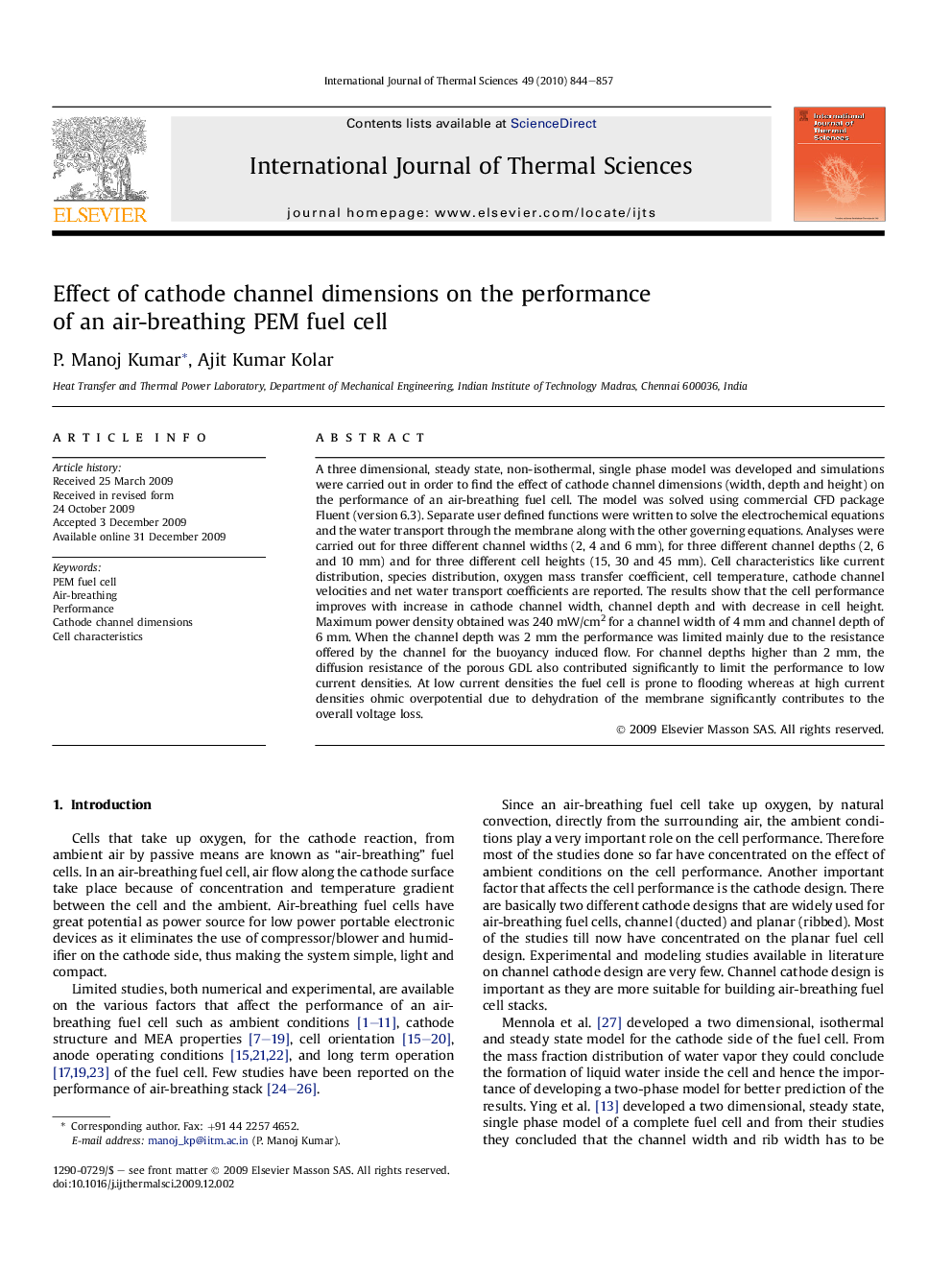| Article ID | Journal | Published Year | Pages | File Type |
|---|---|---|---|---|
| 668789 | International Journal of Thermal Sciences | 2010 | 14 Pages |
Abstract
A three dimensional, steady state, non-isothermal, single phase model was developed and simulations were carried out in order to find the effect of cathode channel dimensions (width, depth and height) on the performance of an air-breathing fuel cell. The model was solved using commercial CFD package Fluent (version 6.3). Separate user defined functions were written to solve the electrochemical equations and the water transport through the membrane along with the other governing equations. Analyses were carried out for three different channel widths (2, 4 and 6Â mm), for three different channel depths (2, 6 and 10Â mm) and for three different cell heights (15, 30 and 45Â mm). Cell characteristics like current distribution, species distribution, oxygen mass transfer coefficient, cell temperature, cathode channel velocities and net water transport coefficients are reported. The results show that the cell performance improves with increase in cathode channel width, channel depth and with decrease in cell height. Maximum power density obtained was 240Â mW/cm2 for a channel width of 4Â mm and channel depth of 6Â mm. When the channel depth was 2Â mm the performance was limited mainly due to the resistance offered by the channel for the buoyancy induced flow. For channel depths higher than 2Â mm, the diffusion resistance of the porous GDL also contributed significantly to limit the performance to low current densities. At low current densities the fuel cell is prone to flooding whereas at high current densities ohmic overpotential due to dehydration of the membrane significantly contributes to the overall voltage loss.
Related Topics
Physical Sciences and Engineering
Chemical Engineering
Fluid Flow and Transfer Processes
Authors
P. Manoj Kumar, Ajit Kumar Kolar,
